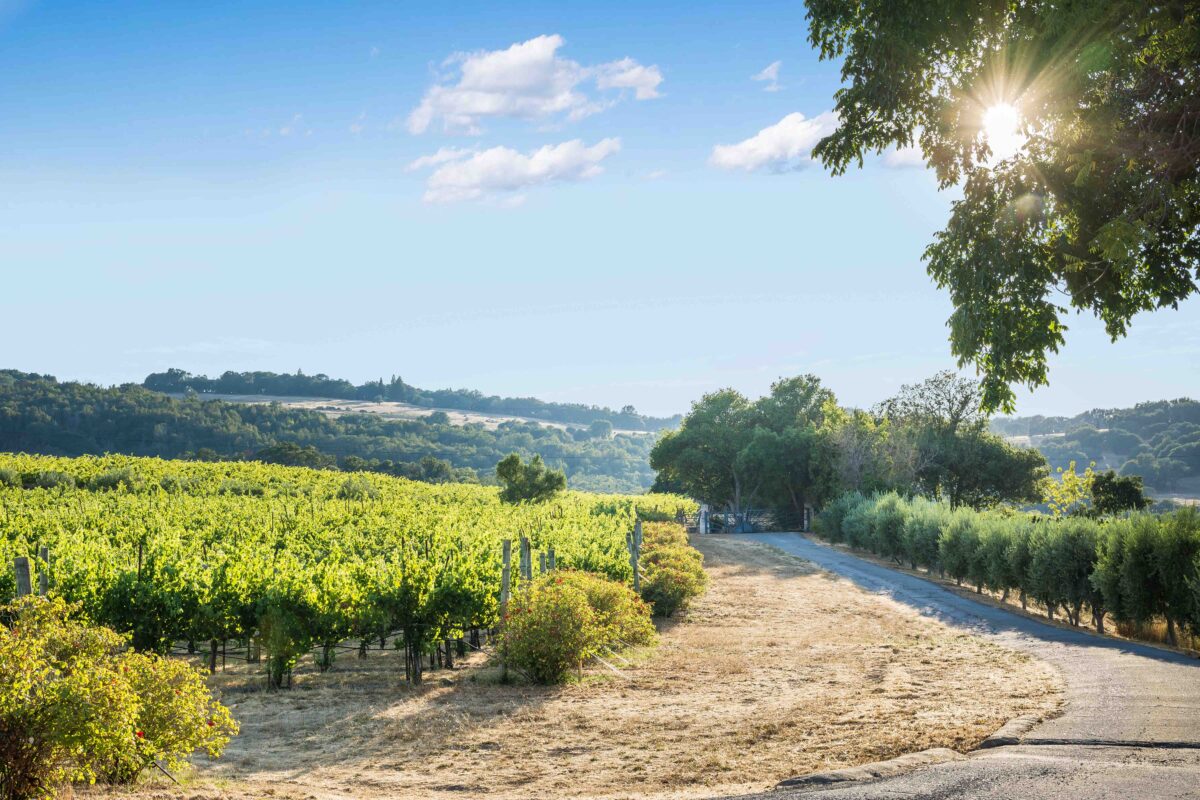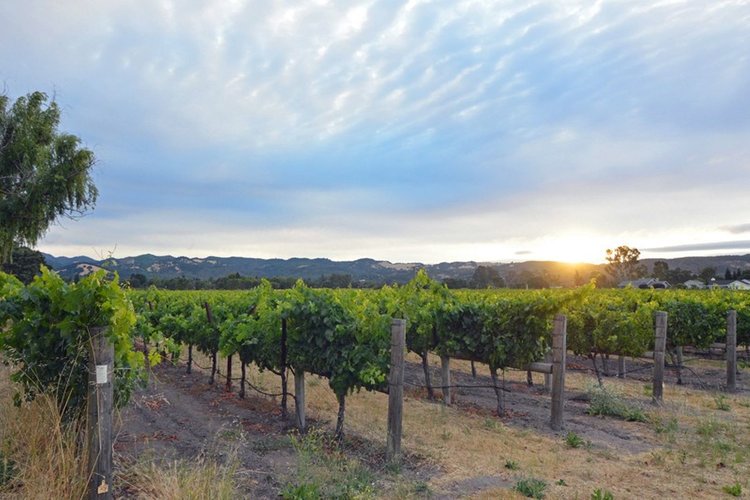The unique vineyards of Sonoma County cannot easily be described. From the southern tip of Sonoma to the northern most part of Alexander Valley, Sonoma County offers the greatest variety of high quality wines. It is considered one of the most prestigious growing regions in the world and we take great pride in that. As grape growers we are blessed to be able to cultivate vines in Sonoma, where the soils and micro climates offer distinct fruit characteristics. The Mediterranean climate gives the vines that perfect combination of heat and cold without major extremes.
The annual journey of a grapevine consists of a roughly 170 day growing season, starting with bud break in the spring and ending with the beautiful yellow and red leaves falling in the autumn. As winter pushes the vines to shut down and go into dormancy through the cold months, the small window allowed for cultural practices puts a huge strain on the resources of grape growers. It is our job to take into consideration the effects of weather, and how it affects the development of the vine through bud break, bloom, fruit set, verasion and harvest. At each stage, different cultural practices are required some of which include pruning, mowing, discing, suckering, thinning and pest and disease management followed by harvest.
Parmelee-Hill Vineyard
Ned’s parents, Steve Hill and his wife Gwen Parmelee Hill purchased the first parcel of their Parmelee-Hill Vineyards property in 1994 and planted it with Syrah (Durell Clone). In subsequent years Steve and Gwen purchased adjoining acreage, piecing together what is today the 65 acre Parmelee-Hill Vineyard.
Once a part of the celebrated Durell Ranch, Parmelee-Hill Vineyards lies in the Southwest corner of the Sonoma Valley and Sonoma Coast Appellations, a stones throw from the Carneros line.
“The heart of the Parmelee-Hill property sits on a knoll that faces the Sonoma Valley to the East and San Pablo Bay to the South. The climate is typical of coastal influenced areas. Morning fog retreats during warming midday hours. The warmth is commonly broken however by intense afternoon ocean winds that quickly drop the temperature. The fog sometimes retreats only as far as the Western hills until it blows back overhead fairly early in the afternoon. This type of climate tends to be self-restricting, resulting in naturally low-yielding vines producing fruit with intense flavor.” -p-hwines.com
In 2021, La Prenda was able to purchase less than two tons from the original 1.5 acres block of Syrah to create the inaugural Durrell Clone Syrah for our premium label, Fifth Hill Wines.
The Durell clone Syrah was extremely popular in the eighties and nineties,” said Ned Hill. “It has history and followers even to this day. We want to acknowledge that heritage and honor my dad’s contribution to the Durell Syrah legacy.”
Pickberry Vineyard

Pickberry is a 30-acre vineyard on the northeast slope of Sonoma Mountain near Glen Ellen, California owned and operated by the Strotz family. The site is a rolling hillside plot on volcanic soil. At Pickberry, they grow Cabernet Sauvignon, Merlot, Cabernet Franc, Malbec and Petit Verdot. Since 1986, consistently award winning wines have been made from this fruit.
Pickberry is exposed to cooling afternoon coastal wind. While the days can be warm, it is rarely as hot as Sonoma Valley, and nights are usually cool and often foggy. The result is late ripening fruit which benefits from a long growing season with the development of intense flavors and rich, deep colors. The hillside location protects the vineyard from most spring frosts and encourages summer cooling.
The volcanic soil at Pickberry changes dramatically from one location to another in the vineyard. Some blocks have deep red soil, others are shallow grey clay, some are clay loam and one is so full of rocks it is nick-named the ”Rock Garden”. The result is that they have divided the vineyard into a number of small blocks with unique soil types and specific varieties of grapes. The blocks tend to ripen at different times, with harvest often spread out over 6 or 7 weeks.
Fichtenberg (Vineyard Station)

Vineyard Station has been farmed by La Prenda Vineyards Management since 1998 and we are now producing a 100% Malbec wine from the site which is extremely unique for the Sonoma Valley. Located in the southwest corner of the Sonoma Coast Appellation, Vineyard Station boasts Huichica clay loam soil and is situated on Sonoma’s East side. The climate is very cold in the Spring and warm to hot in the Summer, bringing the Malbec to full ripeness in early October. Malbec is a rare varietal for Sonoma County, but this site suits it perfectly and the resulting grapes are of the highest quality.
SUSTAINABILITY

All of the vineyards we manage are sustainably farmed, and I am proud to be able to say that. We are strong supporters of Fish Friendly Farming. We farm vineyards of all shapes and sizes. With all the different farming techniques and practices that we implement, it is essential that we are able to preserve the ground that is giving us our livelihood. Since sustainability is such a heavily-used term, I want to share what it means to us. We have been farming our whole lives. It is a tradition and a great responsibility that has been passed down through generations.
There have been thousands of different techniques used since the inception of grape growing, and it is something that needs to continue to be improved upon. It is our responsibility to help educate those who express interest in our trade and it is imperative that our community understand what we do. In showing others our passion and commitment to our ground, we hope to help people gain a better understanding. In today’s world, reducing our environmental impact is critical to long term success. Without everyone acknowledging their outputs, it is hard to improve upon. This is why we are upgrading tractors and equipment to better accommodate emissions and usage needs. Monitoring our water usage on a per vine basis and learning about different technologies has helped reduce the amount of water that travels below the root zone.
These are just a few of the things we are doing to reduce our environmental impact. In order to implement these adapting practices, we continue to aggressively monitor our budgets and ensure that we will be able to continue doing what it is we truly love.
